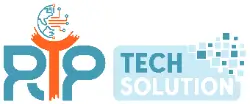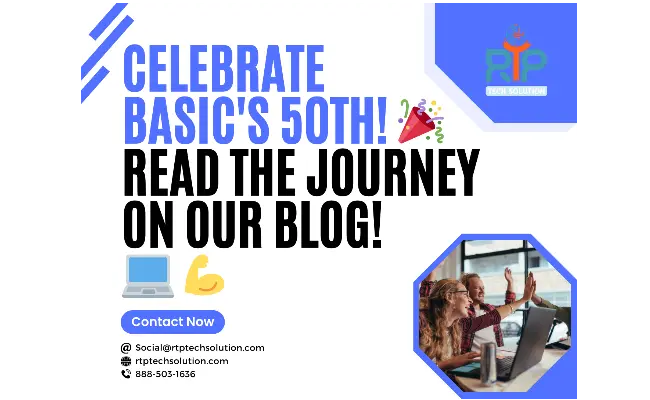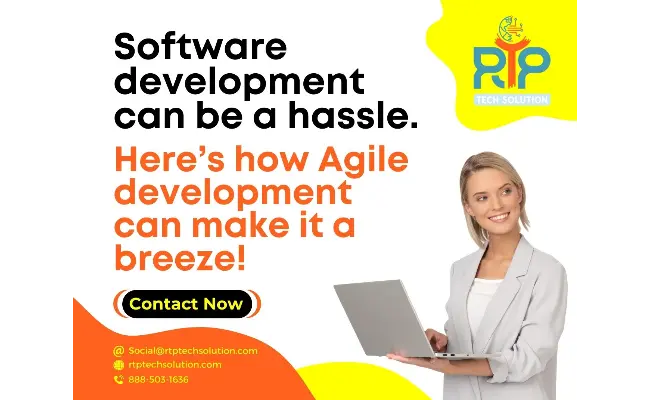Programming languages have come a long way since the early days of computing. In this blog post, we’ll explore the programming language that made computers personal and revolutionized the tech industry – BASIC. We’ll take a closer look at its history, features, and legacy, and discuss why it remains a valuable language to learn for beginners.
Before BASIC, programming languages were primarily used by scientists and engineers for complex calculations and simulations. BASIC changed that by making programming more user-friendly and accessible. It used simple syntax and easy-to-understand commands, allowing anyone to learn how to program a computer
The Birth of Personal Computing and the Programming Language
In the early days of computing, programming languages were primarily reserved for experts, making them inaccessible to the average user. However, the introduction of BASIC in 1964 changed the game. Developed by John G. Kemeny and Thomas E. Kurtz at Dartmouth College, BASIC was a beginner’s all-purpose symbolic instruction code that made computers personal, inviting enthusiasts of all skill levels to participate in the digital revolution.
The Dartmouth Time Sharing System, a groundbreaking computing platform, allowed users to input programs using punch cards and provided a more interactive experience. This versatile language allowed users to create and edit their software, bridging the gap between hardware and human imagination. Thanks to visionaries like Bill Gates and Paul Allen, who developed a version of BASIC for the Altair 8800, computer programs became more accessible to the masses.
By the late 1970s and early 1980s, BASIC was the language of choice for personal computing, from the Apple II to the Commodore 64. With the emergence of this basic programming language, programming languages were no longer reserved for the elite but rather were accessible to anyone with a curious mind and a computer.
The Evolution of Programming Languages: From Object-Oriented to Web Applications
As the world of computing advanced, so did the programming languages that powered it. In the 1990s, object-oriented languages like C++, Java, and Python emerged, each offering unique capabilities to developers. While these languages may have seemed more complex than their predecessors, they allowed for greater versatility and innovation in software design.
As a result, programming languages continued to evolve, with each generation offering a new way to interact with and shape our digital world.
During this period, web applications started gaining popularity, and server-side programming languages like PHP, Ruby, and JavaScript were instrumental in delivering dynamic content to users. These languages enabled the creation of complex web applications and transformed the way we interact with the internet.
Programming Today – Finding the Right Language for Your Needs
Fast forward to the present day, and we find ourselves with an abundance of programming languages to choose from. From Swift for iOS development to JavaScript for web-based applications, there’s a language for every purpose. Deciding how to program in this diverse landscape may seem overwhelming, but it’s important to remember that each language offers unique benefits and drawbacks.
For beginners, languages like Python and Ruby provide a gentle introduction to programming, with their easy-to-read syntax and extensive resources for learning. For those seeking to create visually stunning websites, HTML, CSS, and JavaScript are essential skills.
As for developers wanting to dive into the world of artificial intelligence, languages like Python and R are popular choices.
Ultimately, the decision of how to program is a personal one, based on your interests, goals, and the specific projects you wish to tackle. Whether you’re working on an operating system, a web application, or application development, there’s a programming language tailored to your needs.
Beyond the Code – The Importance of Soft Skills in Computer Science
In today’s competitive job market, simply knowing a programming language isn’t enough. Employers in the computer science field are increasingly looking for well-rounded individuals with strong communication, problem-solving, and critical-thinking skills.
Even if you’re an expert in a programming language that makes computers personal, it’s crucial to develop these soft skills to stand out from the crowd.
Collaboration is key in the world of programming, as projects often involve teams with diverse skill sets.
Being able to communicate effectively and work well with others can make all the difference in your success as a developer. From building web applications to designing an operating system, every development project requires a strong blend of technical and interpersonal skills.
The Future of Programming Languages: A World Beyond BASIC
As we gaze into the future, one thing is clear: programming languages will continue to evolve in response to the changing needs of our increasingly digital world. With advancements in artificial intelligence, virtual reality, and quantum computing on the horizon, it’s anyone’s guess what the next popular programming language will be.
One possibility is that we’ll see a greater focus on languages that prioritize human-readable syntax and user-friendly interfaces, making programming even more accessible to the masses.
In the future, everyone could potentially learn how to program, continuing the democratization of coding that started with the basic programming language, BASIC, all those years ago.
A Personal Journey: From BASIC to Today’s Object-Oriented Languages
For many of us who grew up in the ’80s and ’90s, BASIC was our introduction to the world of programming. We spent countless hours hunched over our keyboards, typing in lines of code from computer magazines, and experiencing the thrill of seeing our basic program come to life on screen. It was a programming language that made computers personal, transforming them from intimidating machines into tools for creativity and exploration.
Today, the landscape of programming languages is more diverse and exciting than ever before. Object-oriented languages like Python and Java have become staples in the industry, while languages like Swift and JavaScript are crucial for mobile and web application development, respectively.
Whether you’re a seasoned developer or a complete beginner, there’s a language out there that’s perfect for you. The question isn’t so much “how to program,” but “what do you want to create?”
The Magic of Coding: Turning Ideas into Reality
Programming is more than just writing code; it’s about solving problems, expressing creativity, and making a difference in the world. Whether you’re developing a mobile app, designing a website, or creating a video game, programming allows you to turn your ideas into reality.
And the best part? You get to decide how to program, which tools to use, and what you want to accomplish.
The programming languages we choose are more than just tools; they’re a reflection of our thought processes, our approach to problem-solving, and our creative vision.
As we write our code, we’re not just telling a computer what to do – we’re telling a story about who we are as developers and what we believe in.
The Power of Programming: Embracing the Future
In the end, programming is more than just a skill – it’s a form of empowerment. By learning how to program, we gain the ability to shape our digital world, to create new technologies, and to solve complex problems.
Whether we’re working in Python, Java, or the programming language that made computers personal all those years ago, we’re part of a global community of innovators, creators, and problem-solvers. And that, my friends, is something truly extraordinary.
From BASIC to Beyond – The Journey Continues
So, whether you’re a veteran programmer or a newbie taking your first steps into the world of code, remember this: the power of programming lies not in the language you choose, but in what you do with it.
From the humble beginnings of BASIC to the sophisticated programming languages of today, the journey of coding is a testament to human innovation, creativity, and our never-ending desire to explore new frontiers.
Here’s to the programming language that made computers personal, to the programming languages yet to come, and to all the incredible things we’ll create along the way!
And with that, we’ve come to the end of our nostalgia-tinged journey through the world of programming languages. Now, it’s time for you to go forth, choose your language, and start creating something amazing. After all, that’s what programming is all about!
An Ode to the Coders
As we wrap up our journey, let’s not forget to acknowledge the pioneers of the past who laid the foundation for the modern programming languages we use today. John G. Kemeny, Thomas E. Kurtz, Bill Gates, Paul Allen – all these visionaries played a pivotal role in bringing programming to the masses.
Their tireless efforts in creating the BASIC programming language paved the way for an era of personal computing.
Coding into the Future – Embrace Your Inner Programmer
So, whether you’re about to write your first line of code or are a seasoned developer, remember to pay homage to the trailblazers who made it all possible. Their work reminds us that programming isn’t just about writing code; it’s about breaking barriers, fostering creativity, and empowering individuals
Now’s the time to take the plunge and embark on your coding journey in this exhilarating world of programming languages. Remember, every line of code you write is not just an instruction to a computer, but a tribute to the pioneers of programming, a testament to your creativity, and a step towards shaping the future.
If you’re ready to dive into programming but need a little guidance, reach out to RTP Tech Solution. Our team of experienced developers is here to help you navigate the vast landscape of programming languages and set you on the path to success. Don’t wait another minute – contact RTP Tech Solution today and unlock your full coding potential!




